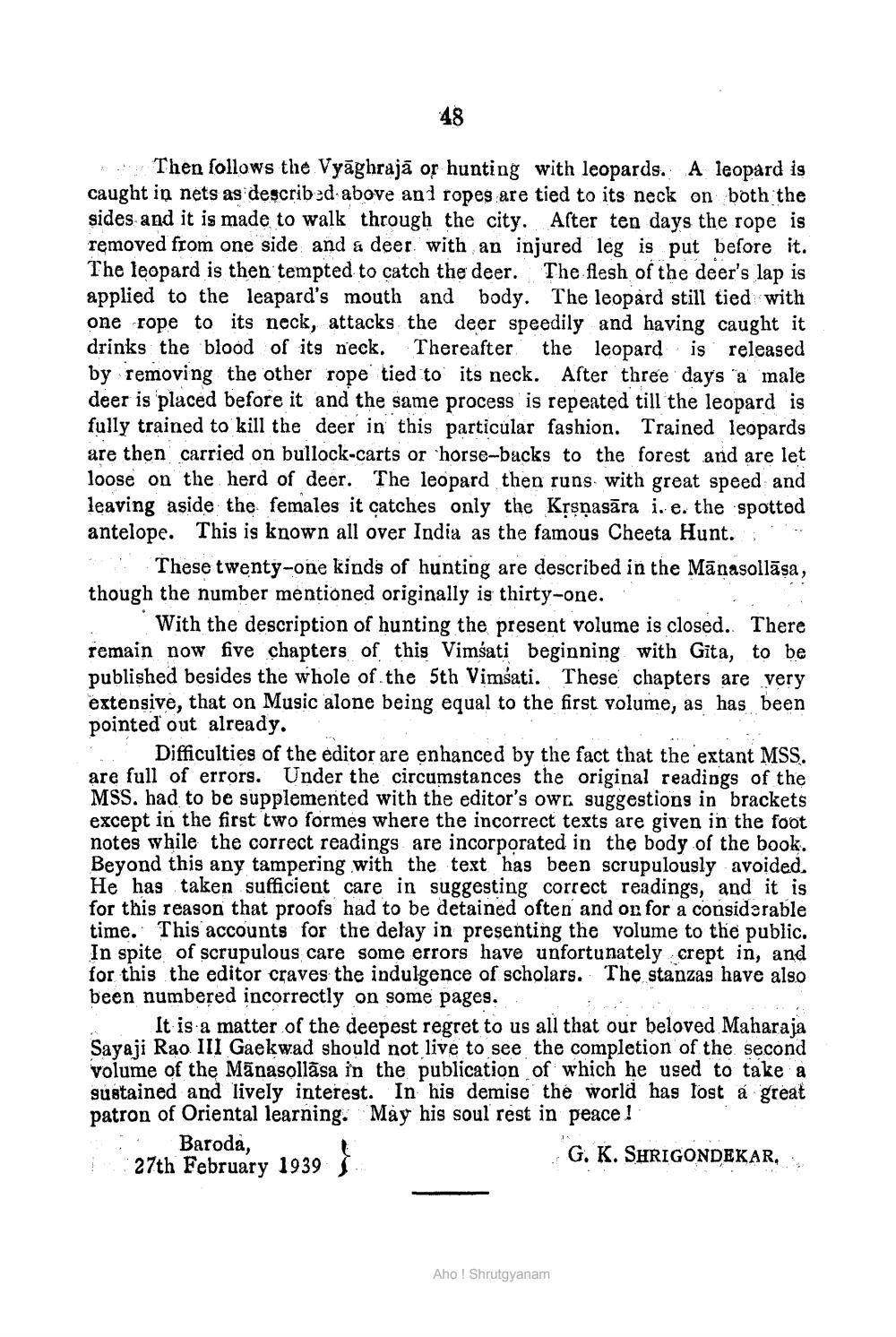________________
48
Then follows the Vyāghrajā or hunting with leopards. A leopard is caught in nets as described above and ropes are tied to its neck on both the sides and it is made to walk through the city. After ten days the rope is removed from one side and a deer with an injured leg is put before it. The leopard is then tempted to catch the deer. The flesh of the deer's lap is applied to the leapard's mouth and body. The leopard still tied with one rope to its neck, attacks the deer speedily and having caught it drinks the blood of its neck. Thereafter the leopard is released by removing the other rope tied to its neck. After three day's 'a male deer is placed before it and the same process is repeated till the leopard is fully trained to kill the deer in this particular fashion Trained leopards are then carried on bullock-carts or horse-backs to the forest and are let loose on the herd of deer. The leopard then runs with great speed and leaving aside the females it catches only the Krşņasāra i.e. the spotted antelope. This is known all over India as the famous Cheeta Hunt.
These twenty-one kinds of hunting are described in the Mānasollāsa, though the number mentioned originally is thirty-one.
With the description of hunting the present volume is closed. There remain now five chapters of this Vimsati beginning with Gita, to be published besides the whole of the 5th Vimšati. These chapters are very extensive, that on Music alone being equal to the first volume, as has been pointed out already.
Difficulties of the editor are enhanced by the fact that the extant MSS. are full of errors. Under the circumstances the original readings of the MSS. had to be supplemented with the editor's owr suggestions in brackets except in the first two formes where the incorrect texts are given in the foot notes while the correct readings are incorporated in the body of the book. Beyond this any tampering with the text has been scrupulously avoided. He has taken sufficient care in suggesting correct readings, and it is for this reason that proofs had to be detained often and or for a considerable time. This accounts for the delay in presenting the volume to the public. In spite of scrupulous care some errors have unfortunately crept in, and for this the editor craves the indulgence of scholars. The stanzas have also been numbered incorrectly on some pages. ,
It is a matter of the deepest regret to us all that our beloved Maharaja Sayaji Rao III Gaekwad should not live to see the completion of the second volume of the Mānasollāsa in the publication of which he used to take a sustained and lively interest. In his demise the world has tost a great patron of Oriental learning. Mày his soul rest in peace! Baroda,
G. K. SHRIGONDEKAR, 27th February 1939
Aho ! Shrutgyanam




